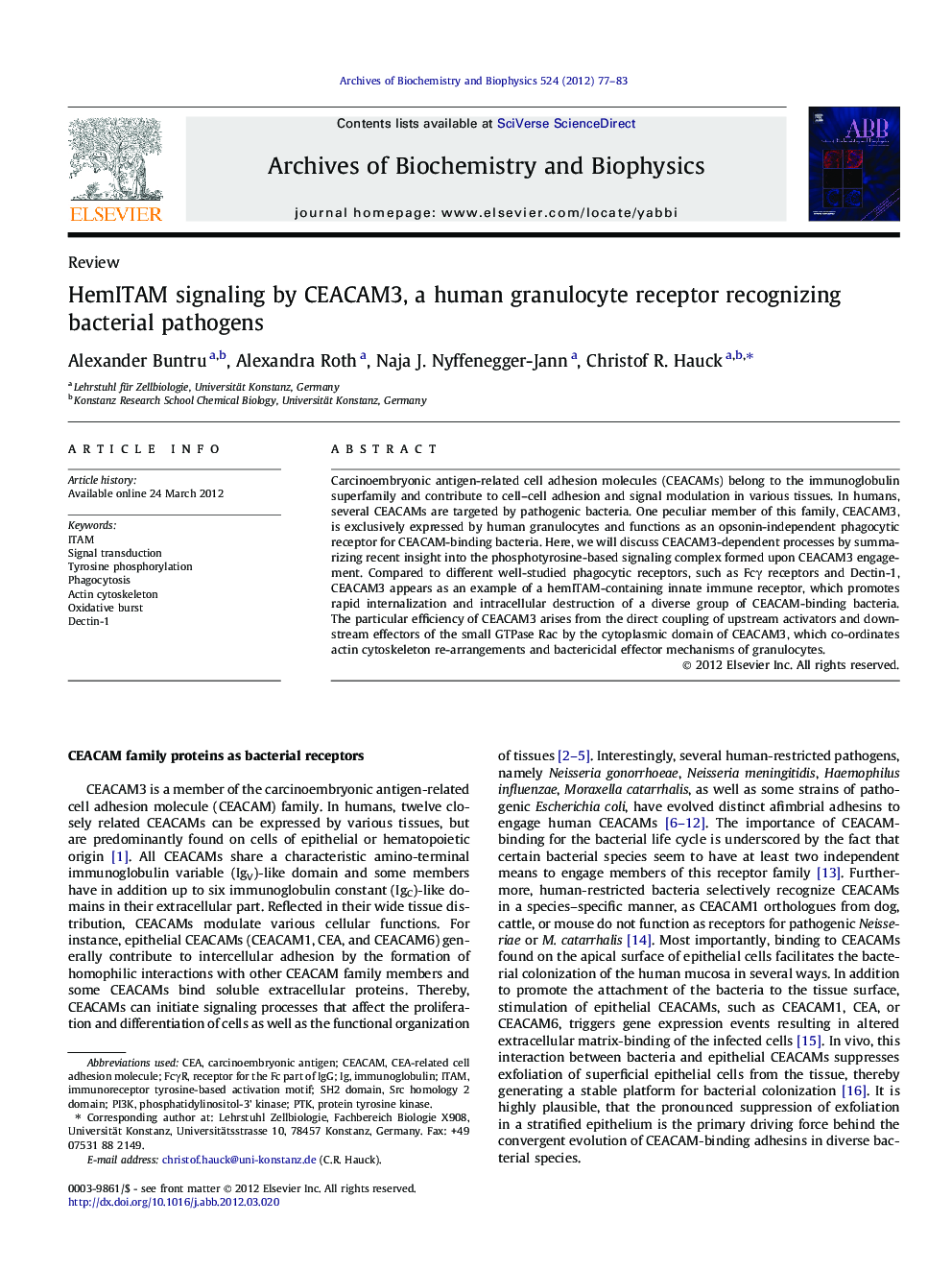| کد مقاله | کد نشریه | سال انتشار | مقاله انگلیسی | نسخه تمام متن |
|---|---|---|---|---|
| 1925529 | 1536388 | 2012 | 7 صفحه PDF | دانلود رایگان |

Carcinoembryonic antigen-related cell adhesion molecules (CEACAMs) belong to the immunoglobulin superfamily and contribute to cell–cell adhesion and signal modulation in various tissues. In humans, several CEACAMs are targeted by pathogenic bacteria. One peculiar member of this family, CEACAM3, is exclusively expressed by human granulocytes and functions as an opsonin-independent phagocytic receptor for CEACAM-binding bacteria. Here, we will discuss CEACAM3-dependent processes by summarizing recent insight into the phosphotyrosine-based signaling complex formed upon CEACAM3 engagement. Compared to different well-studied phagocytic receptors, such as Fcγ receptors and Dectin-1, CEACAM3 appears as an example of a hemITAM-containing innate immune receptor, which promotes rapid internalization and intracellular destruction of a diverse group of CEACAM-binding bacteria. The particular efficiency of CEACAM3 arises from the direct coupling of upstream activators and downstream effectors of the small GTPase Rac by the cytoplasmic domain of CEACAM3, which co-ordinates actin cytoskeleton re-arrangements and bactericidal effector mechanisms of granulocytes.
► CEACAM3 promotes opsonin-independent phagocytosis of CEACAM-binding bacteria.
► CEACAM3 is the main driver for this process on human granulocytes.
► CEACAM3 short-wires multiple cytoplasmic components to trigger rapid phagocytosis.
► CEACAM3-mediated uptake leads to efficient elimination of bacteria.
► CEACAM3-initiated signaling resembles hemITAM functionality described for Dectin-1.
Journal: Archives of Biochemistry and Biophysics - Volume 524, Issue 1, 1 August 2012, Pages 77–83